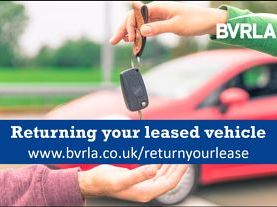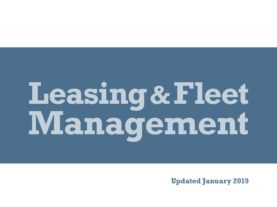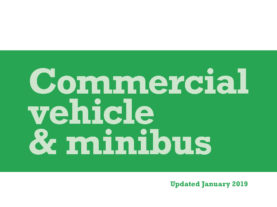Advice about looking after your leased vehicle, including servicing and maintaining it, can be obtained from your leasing provider, the vehicle handbook, a local dealership or the vehicle manufacturer’s website.

Ensure the vehicle is serviced regularly
Regular servicing helps ensure that essential checks are carried out on the vehicle’s safety components such as the braking system and suspension. Regular servicing provides peace of mind that the vehicle is in a road-worthy condition when you drive it. Additionally, looking after the vehicle according to the vehicle manufacturer’s servicing and maintenance schedule is an obligation under your leasing contract and you will be charged a penalty if you cannot produce evidence that the car has been serviced throughout the period of the lease.
Regular servicing can also help to identify issues early on that could later become expensive to rectify and which you will be liable for. Engine oil, for example, is needed to lubricate and protect the moving parts inside the engine and its level must be topped up. Without oil, the engine could seize up and cost you several thousand pounds to repair or replace.
When is a service due? There are some important age and mileage milestones, called service intervals, you need to be aware of, so you must check the vehicle operating manual.
The vehicle’s operating manual will advise you:
- How often you’ll need to get your leased vehicle serviced.
- When the car’s replaceable parts might need changing.
- How often regular maintenance tasks need to be carried out – for example, oil changes.
There will be tasks that need to be completed at each service interval. Some vehicles have service interval information, and even a countdown facility, displayed on the dashboard.
If you have paid for a maintenance package, it is still your responsibility to make the necessary arrangements to have the vehicle serviced.
Choosing a garage or repairer. In the first instance, contact your leasing provider for information as they will offer advice about where you can go to get your leased vehicle serviced economically and to the appropriate standard including any warranty needed for the work. Usually there will be a local dealership in your area or if you choose an independent garage, you must check that it operates to a published code of practice.
Always ask the garage for a detailed breakdown and costing of all the work required so you can see how they arrived at the total cost. Make sure they include all parts, any re-calibration, labour costings and VAT and can provide a receipt and warranty for the work carried out.
Check the garage will carry out the service following the manufacturer’s procedures and use original parts or those of ‘equivalent quality’. You must make sure the service booklet, if available, is date-stamped by the garage or repairer as evidence that service has taken place. If no service booklet is provided make sure you keep hold of detailed receipts showing all the work which has been carried out during your lease.
Watch out for dashboard messages
Most cars have dashboard warning messages about a wide range of topics, including issues with the braking system, engine, oil and coolant levels, and tyre pressures.
The car’s operating manual will explain what each lit-up warning message means and what you need to do to action the message. You must heed these messages to ensure the vehicle continues to run safely and efficiently.
Some messages, usually those with a red light, are particularly urgent if you are driving – they mean you must find a safe place and stop the engine immediately. You may not be able to continue your journey safely and without damaging the vehicle.
Repair chips, scuffs and scratches
Check with your lease provider, but most will allow you to arrange to have minor damage rectified and missing or broken items replaced before the vehicle is returned. You must ensure the work is carried out to a professional standard by a competent repairer and makes sure they provide a transferable warranty for the work.
Check your tyre every 4 to 6 weeks
It is important to care for your vehicle’s tyres. If your tyres are in poor condition they could blow out on a busy road or lose traction in poor weather.
To check your vehicle's recommended tyre pressures, consult the operating manual or go to TyreSafe’s online pressure checker.
Tyres over or under pressure wear out unevenly and need replacing sooner. Replacing tyres can be expensive because they need to be of equivalent quality and rating as originally supplied with the vehicle.
Check for damage on the windscreens
Chips, cracks and holes should not interfere with the driver’s line of sight. If the windscreen does not meet current MOT standards, it must be replaced if you wish to avoid being charged for the replacement. If the windscreen is repaired or replaced, it must be recalibrated according to the vehicle manufacturer’s specification so that any advanced driver assistance system (ADAS) is fully functioning on the vehicle.
Have a current MOT certficate
If your leased vehicle is three years old or more, you must ensure it has a current MOT certificate and arrange for the MOT to be carried out on an annual basis. Alternatively, you can contact your leasing provider who will be happy to make the MOT arrangements for you. Without the MOT, it is an offence under the Road Traffic Act 1972 for the vehicle to be used on public roads and you may be fined or prosecuted.
Look after the upholstery and carpets
When the vehicle is returned, the leasing company will expect the vehicle’s interior upholstery to be clean and odourless with no burns, scratches, tears or staining. Floor covering in the passenger and luggage areas should not be holed, torn or split. It is recommended that you purchase a set of in-car mats to help preserve the condition of the carpets in areas of heavy wear.




